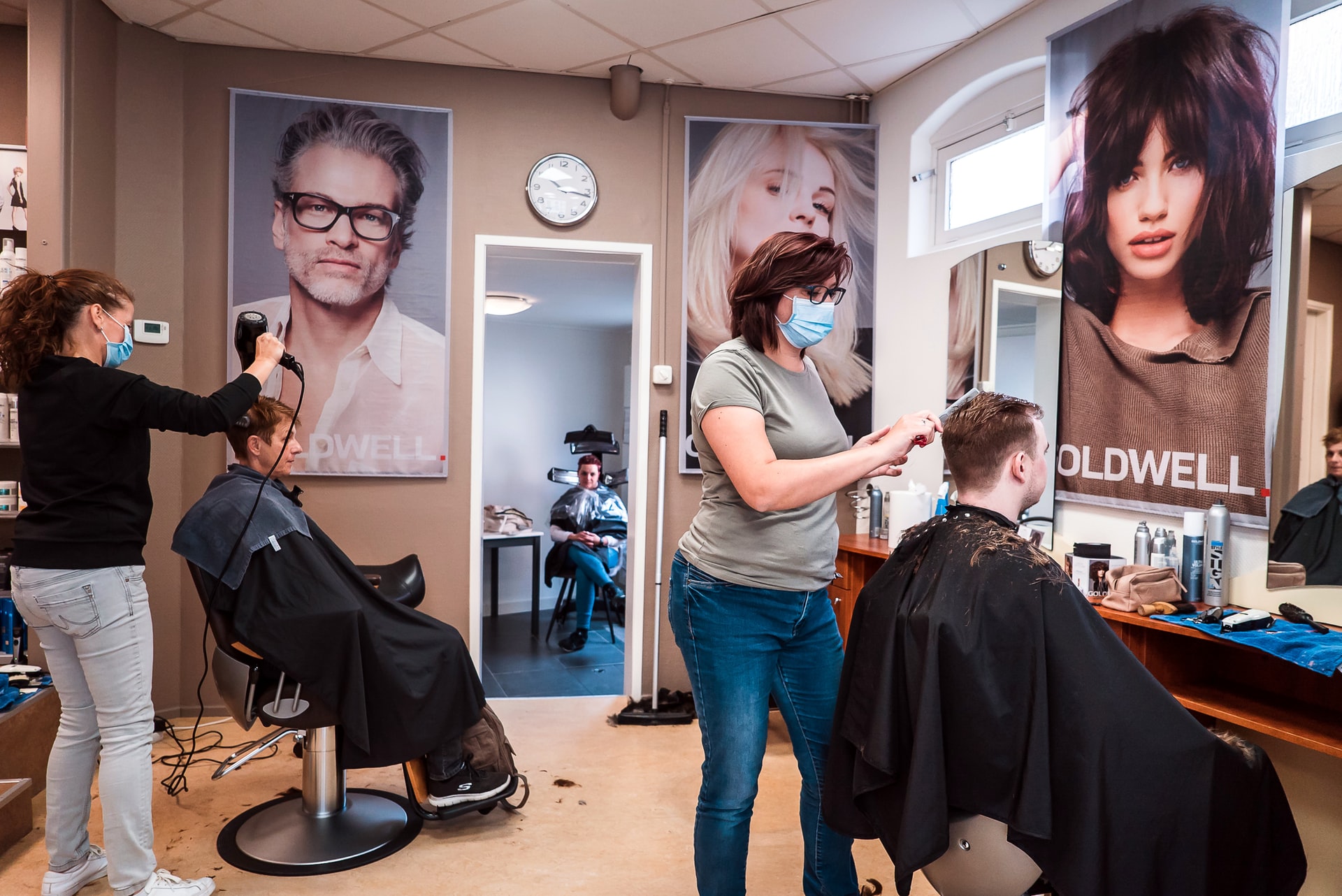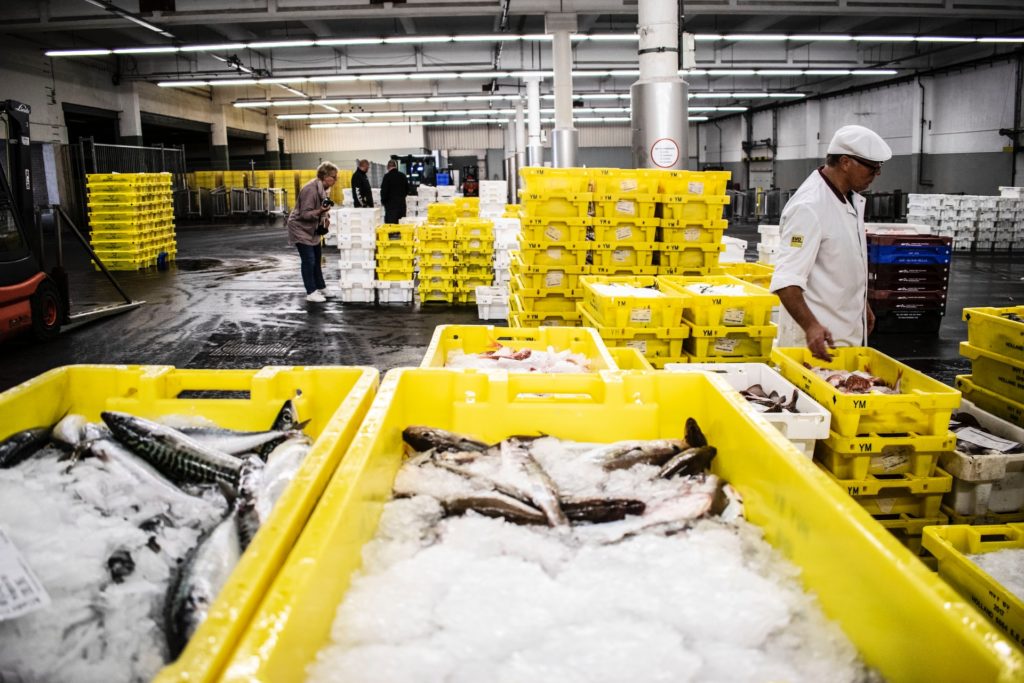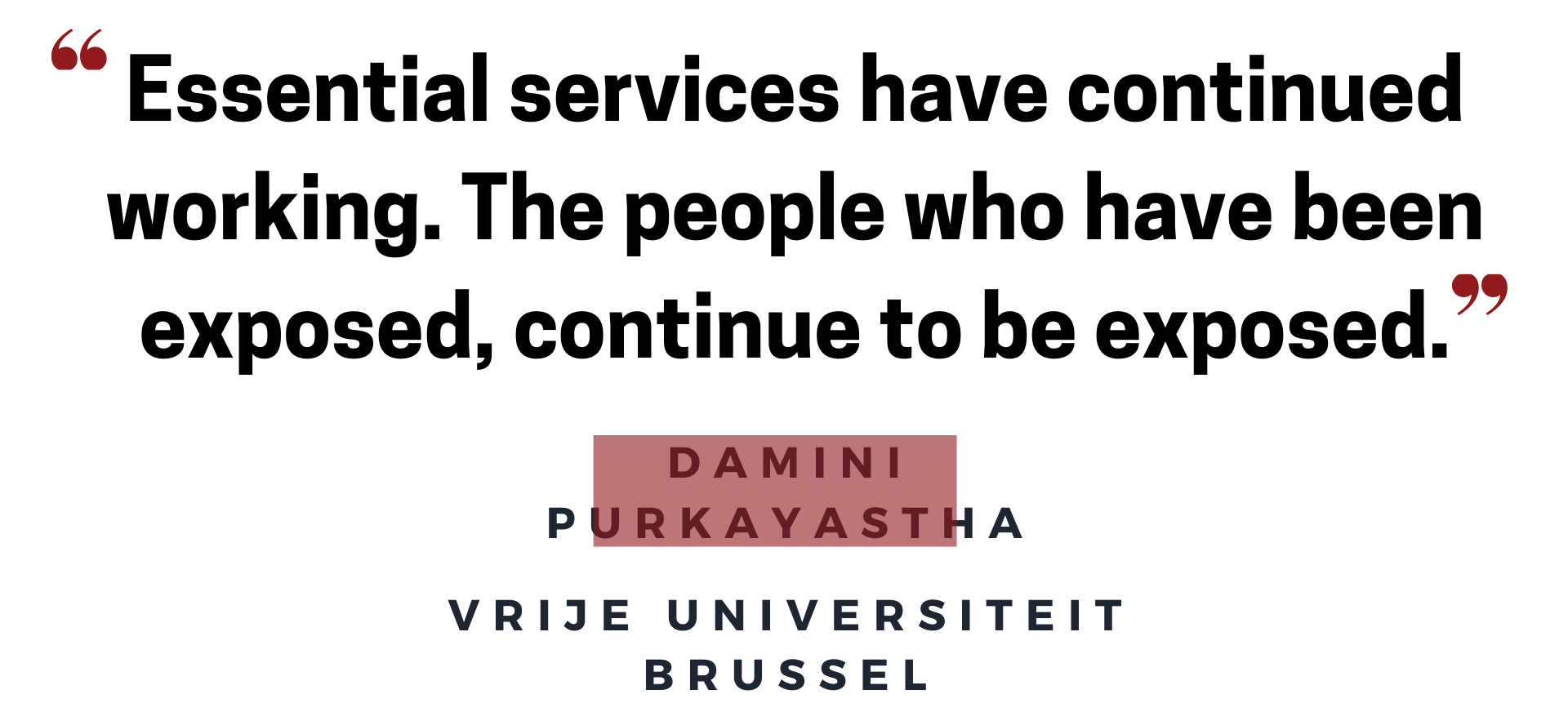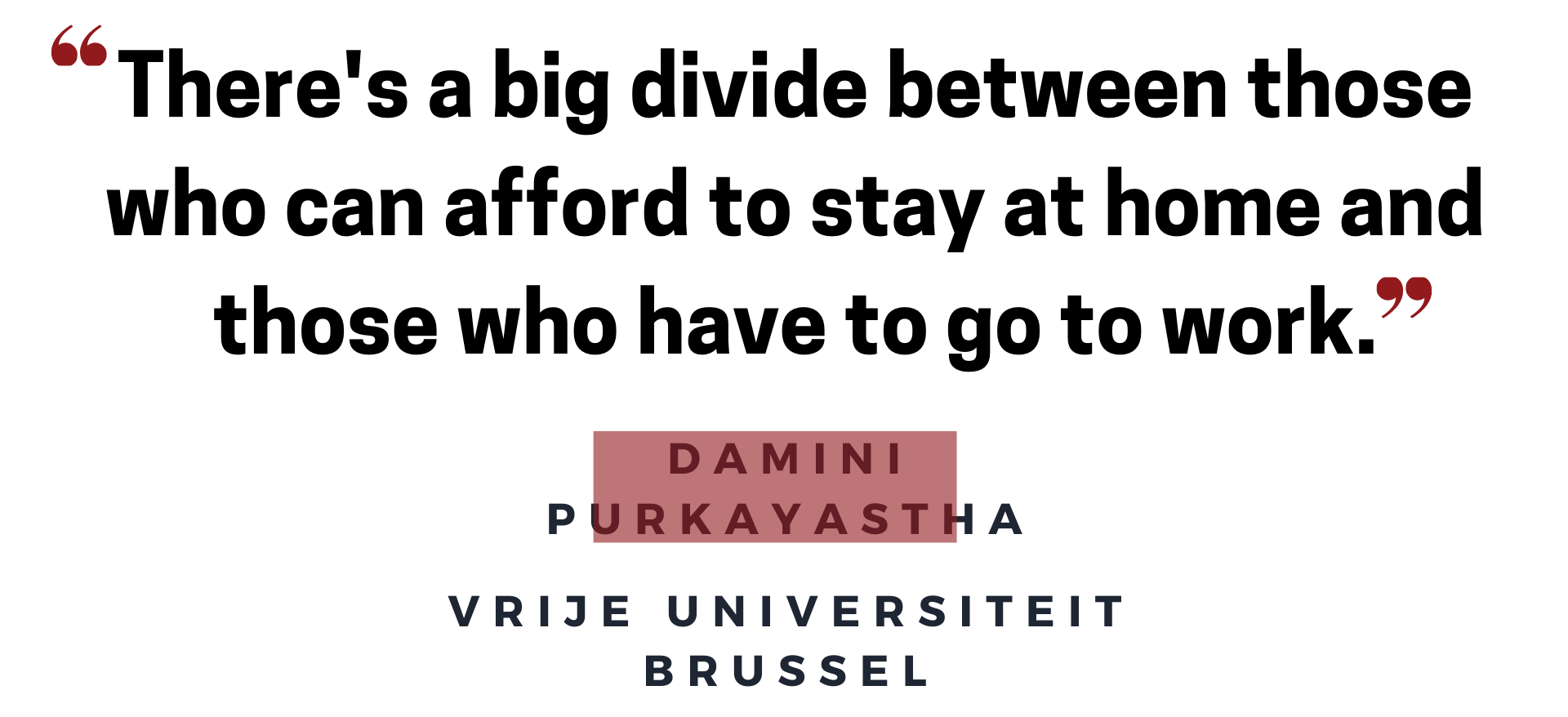The pandemic has exposed deep inequities in society, as essential workers prove to be the most vulnerable when it comes to contracting the virus.
Essential workers have been called “the front line of the pandemic,” but new research from VUB has found that these workers are not only the most vulnerable when it comes to being exposed to Covid-19, but also the least likely to be able to afford to get sick.
“There's a big divide between those who can afford to stay at home and those who have to go to work,” VUB’s Damini Purkayastha told The Brussels Times.
A team of researchers from Interface Demography, VUB were commissioned by the European Trade Union Institute (ETUI) to examine the extent to which occupational health and safety standards play a role in the ongoing pandemic.
They studied how these standards intersect with factors such as job security, union representation, low-income levels, gender, race, ethnicity and migration background, especially during the pandemic.
“What we found is that those people that have to go work during the pandemic are typically people in low paid or precarious positions,” Purkayastha said. “Work is a crucial vector of contamination. Going to work, or being at work has a significant effect on the degree to which you’re exposed to Covid.”
A lack of rights in the workplace
A precarious work position can mean being self-employed, employed on a zero-hour contract or even illegally employed. Sub-contracted employment, which is common in farms and factories across the EU, also creates a high degree of precariousness.
A precarious work position can also mean being dependent on employers for housing, health benefits or even legal residence. Such workers are often on the lower-end of the wage scale and lack basic social rights, in part because of a lack of government regulation.
One particularly vulnerable group of essential employees is care workers.
“They have to commute to work, interact with colleagues. The degree of face to face interaction is high,” said Purkayastha.
“But care workers are also among the lower paid jobs, and despite being an essential one, a lot of care workers are on precarious contracts, and among other things, they have inadequate paid sick leave - if they have any at all.”
Back in October of last year, the International Council of Nurses confirmed that 1,500 nurses died from Covid-19 in 44 countries.
The sector also consists largely of women (they make up 70% of the global care workforce), who face additional hurdles during the global health crisis beyond simply contracting coronavirus.
“There's a shadow pandemic of domestic violence. Even if women are working from home, they still face higher degrees of vulnerability,” Purkayastha pointed out.
Can’t afford to stay home
Low wage workers like those in the care sector cannot afford to stay home when ill, and are less likely to call in sick when experiencing symptoms because they’re worried about losing their jobs.
“In the same storm, not in the same boat,” is how VUB’s Christophe Vanroelen put it.
Vanroelen also worked on the project, and said that occupational health and safety measures must go beyond simply limiting exposure to the virus.
“An adequate prevention policy must also address the factors that make it difficult to protect against exposure, such as employment status, social protection or the level of participation,” Vanroelen said.
“In concrete terms, better representation of workers’ interests, effective control of safety measures, increased job security and social protection, a good sick leave policy and better monitoring of the Covid-19 risk in the workplace can improve the situation of workers who are in a vulnerable position.”
For employees in precarious work situations, fighting for these basic rights isn’t necessarily an option.
The gig economy, for example, exploded during the pandemic with more people taking advantage of delivery services like UberEats or Deliveroo. But these workers have no job security, and inadequate health support.
“You're not in a position to bargain for better protections,” Purkayastha said. “And you're not in a position to stay home, socioeconomically, without being paid. In these ways, your disadvantages are compounded.”

Photo by Ewien van Bergeijk - Kwant
Unionised workers still face risks
Studies showed that while essential workers faced disproportionately higher risks when it came to the virus, sectors with higher union representation had better access to protective equipment and lower Covid-19 mortality rates.
“There is a higher degree of union representation, and yet we see the same intersectional factors of gender, ethnicity, race, income background, etc. - these things still come into play in determining the degree of exposure to Covid,” said Purkayastha.
“For instance, the vaccine is at the moment going to a certain demographic. But the essential services have continued working. The people who have been exposed, continue to be exposed.”
Another factor that even unionised workers can’t get around is that not all jobs can be performed from home.
“Of course meat processing plant workers can’t work from home,” said Purkayastha, pointing out that employers can rethink the protections they offer those workers who have to be on site during the global pandemic.
Outbreaks spread from essential workers to beyond
Their research also looked at employees who work in mines, and those performing agricultural labour. The nature of such jobs required people to work in close proximity, without the ability to socially distance, and they often had limited access to basic hygiene measures.
“There are also systemic reasons why [demographic] factors determine the extent of exposure to Covid-19, and it is important to address these,” said Purkayastha.
For instance, all across Europe, migrant workers are employed on farms during harvest seasons. Their housing is arranged by the employers and without much oversight at a larger policy level. Reports show that conditions are so deplorable, they became hotspots during several outbreaks.
“There have been several cases in sectors across the EU where workers were put up in make-shift houses and even shipping containers with one toilet for more than 20 people,” said Purkayastha. “These are not conditions in which you can maintain social distancing.”
In Italy’s Calabria region, the researchers found, between 400,000 and 430,000 migrant workers were employed illegally or spuriously and housed in shanty towns, living in “temporary shacks made of cardboard, wood and scrap metal” without electricity or water.
Over the course of the pandemic, several of the camps were declared red zones and went into mandatory quarantine following outbreaks of coronavirus.
“As the workers in quarantined camps had no income, no social security and faced punitive action from the local government if they broke quarantine rules, there was also a higher chance that workers would not report sick even if they had Covid-19 symptoms,” the researchers found.
Not too late for a solution
As vaccination rollouts continue across the EU and the world, the coronavirus may become less of a threat, but that doesn’t mean the crisis is over for essential workers and their families.
People employed in healthcare, elderly care homes, transport, sanitation, farms, factories and retail are among the many that have to continue to work while waiting their turn for a vaccine.
“What we found is that in most cases of work-related Covid-19, things aren’t a coincidence,” Purkayastha explained.
“We have very clear reasons that it was a repetitive pattern, these were systemic reasons that had to do with the nature of work, nature of employment and the sociodemographic factors.”
Precarious or downright dangerous situations, in particular like those for migrant agricultural workers, will remain long after the virus is eradicated.
“It's not just exposure to disease,” said Purkayastha. “That's compounded by a whole number of sociodemographic and broader factors that policies can address, and it's important to sort of have that perspective.”
“Policies have to take that into consideration.”
The researchers point out that addressing Covid-19 as an occupational hazard means more than just providing adequate protection to employees forced to keep working throughout a deadly pandemic - it means dismantling the systems that make workers vulnerable in the first place, from precarious contracts and a lack of social rights, to systemic discrimination, rock-bottom wages and no job security.
“It is important that we become resilient to future shock events as well,” Purkayastha warned. “For this, health and safety need to have a broader focus.”
The report, titled “Work, health and Covid-19: a literature review,” was commissioned by the research institute of the European Trade Union Confederation and led by Damini Purkayastha, Christophe Vanroelen and their colleagues at VUB’s Interface Demography research group.




